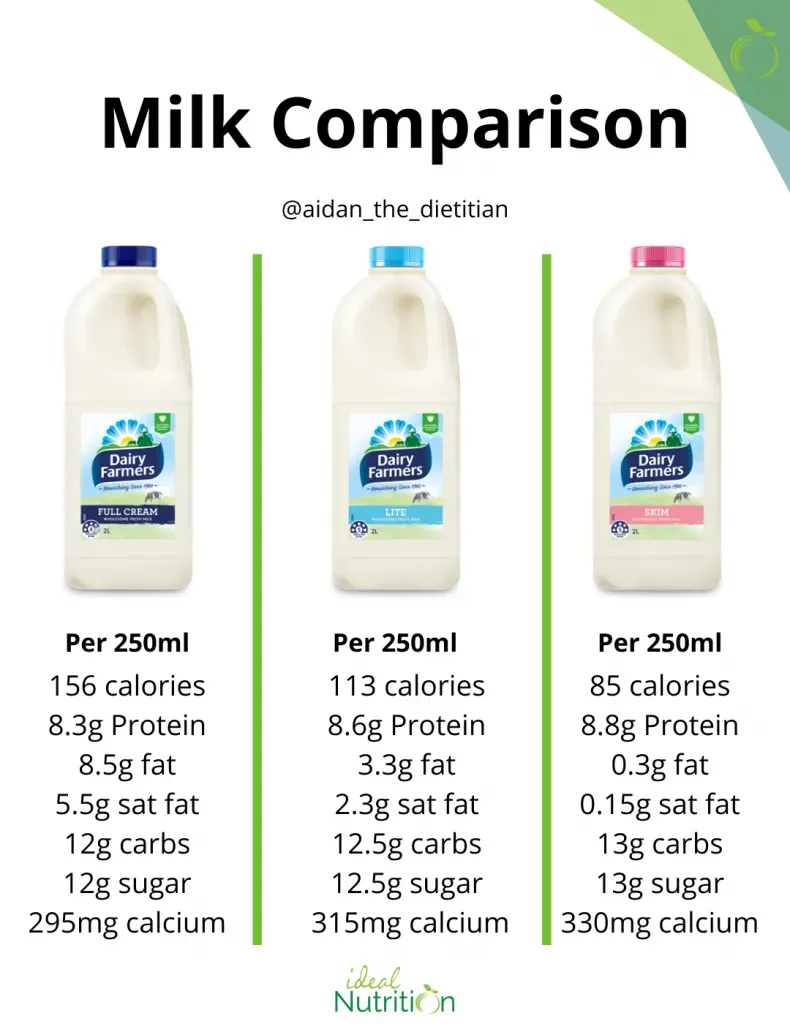Table of Contents
Picking milk at the grocery store shouldn't require a math degree, but sometimes it feels like it, right? You're staring at a wall of options: whole, 2%, 1%, skim, organic, lactose-free... the list goes on. And then there's the specific head-scratcher: what's the actual difference betweenlow fat vs reduced fat milk? Are they just fancy marketing terms for the same thing, or is there more to it?
Milk Types Explained: Beyond Whole
Milk Types Explained: Beyond Whole
It's Not Just About Whole Milk Anymore
Walk into any dairy aisle today, and you'll see that milk isn't just one thing. Gone are the days when the main choice was simply "milk" (which usually meant whole milk). Now, we're looking at a spectrum, tailored for different diets, tastes, and needs. You've got your classics like whole, but then you dive into reduced-fat, low-fat, and fat-free options, often called skim. But the variations don't stop there. We also see organic versions, lactose-free milk for those with digestive issues, and even flavored milk, though that's usually aimed at a different crowd and often loaded with sugar.
Each type starts with the same basic liquid from the cow, but the processing makes all the difference. The main thing that changes as you move from whole to skim is the amount of milkfat removed. This removal impacts not just the fat and calorie count but also the texture and how it feels in your mouth – that creamy richness of whole milk versus the lighter, almost watery feel of skim. Understanding these distinctions is the first step in navigating the dairy case and figuring out what you're actually getting when you pick up a carton.
- Whole Milk: The benchmark, contains 3.25% milkfat.
- Reduced-Fat Milk: Often labeled 2%, contains 2% milkfat.
- Low-Fat Milk: Usually labeled 1%, contains 1% milkfat.
- Fat-Free Milk: Also called skim or non-fat, contains less than 0.5% milkfat.
- Organic Milk: Produced under specific organic farming standards, fat content varies by type (whole, 2%, etc.).
- Lactose-Free Milk: Regular milk with the lactose sugar broken down, fat content varies.
ReducedFat Milk vs. LowFat Milk: Breaking Down the Numbers
ReducedFat Milk vs. LowFat Milk: Breaking Down the Numbers
What's the Deal with Reduced-Fat Milk?
Alright, let's tackle the first one: reduced-fat milk. When you see "reduced-fat" on a carton, you're almost always looking at 2% milk. This means they've removed enough milkfat to get it down to exactly 2% of the total weight. Think of it as a middle ground. It's not as rich and creamy as whole milk, which clocks in at 3.25% fat, but it still holds onto a bit more body and flavor than the really lean stuff. For years, this was the go-to recommendation for families looking to cut back on saturated fat without going full-on watery. It provides a decent compromise on texture and taste while shaving off some calories compared to whole milk.
And What About Low-Fat Milk?
Now, slide over one step further on the fat-removal scale, and you hit low-fat milk. This one is typically labeled as 1% milk. See the pattern? They've pulled out even more fat than in the reduced-fat version, landing at just 1% milkfat. This definitely changes the game in your glass. The texture is noticeably lighter, less viscous than 2% or whole milk. Some folks find it perfectly fine, especially if they're mixing it into cereal or using it in recipes where the fat content isn't critical for richness. Others miss that mouthfeel you get from milk with more fat.
Here's a quick look at how they stack up side-by-side in a standard 8-ounce serving:
Milk Type | Milkfat Percentage | Approximate Calories | Approximate Fat (grams) |
|---|---|---|---|
Reduced-Fat (2%) | 2% | 120 | 5 |
Low-Fat (1%) | 1% | 100 | 2.5 |
Fat Content and Calories: The Key Nutritional Differences
Fat Content and Calories: The Key Nutritional Differences
It All Comes Down to the Fat Percentage
When you're comparing low fat vs reduced fat milk, the most obvious difference staring you in the face is the percentage of milkfat. That number isn't just for show; it directly impacts the nutritional profile, especially the fat and calorie counts. Whole milk, the original, packs 3.25% fat. Reduced-fat, or 2%, cuts that number significantly. Low-fat, at 1%, slashes it even further. Skim, or fat-free, gets rid of almost all of it, typically less than 0.5%. This fat isn't just about texture; it's a source of calories and, importantly, saturated fat. Shifting from whole milk to 2% or 1% is a common strategy people use to reduce their intake of saturated fat without giving up milk entirely.
Calories Tell Part of the Story
Naturally, with less fat comes fewer calories. Fat is calorie-dense, providing about 9 calories per gram compared to 4 calories per gram for protein and carbohydrates. So, as you strip away the fat from milk, you're also stripping away calories. An 8-ounce glass of whole milk has around 150 calories. Drop down to reduced-fat (2%), and you're looking at about 120 calories. Low-fat (1%) brings it down to roughly 100 calories. Fat-free or skim milk is the leanest option calorie-wise, typically hitting around 80 calories per serving. While the calorie difference between 2% and 1% might seem small per glass, those differences can add up over time, especially if you consume multiple servings daily or use milk frequently in cooking and baking.
Milk Type | Milkfat Percentage | Approximate Calories (per 8 oz) | Approximate Fat (grams per 8 oz) | Saturated Fat (grams per 8 oz, approx) |
|---|---|---|---|---|
Whole Milk (3.25%) | 3.25% | 150 | 8 | 5 |
Reduced-Fat (2%) | 2% | 120 | 5 | 3 |
Low-Fat (1%) | 1% | 100 | 2.5 | 1.5 |
Fat-Free (Skim) | <0.5% | 80 | <0.5 | <0.3 |
Choosing Your Milk: Low Fat, Reduced Fat, or Something Else?
Choosing Your Milk: Low Fat, Reduced Fat, or Something Else?
It Really Comes Down to You (and Maybe Your Doctor)
So, you've seen the numbers. Reduced-fat has 2% fat, low-fat has 1% fat. The calorie difference per glass isn't massive, maybe 20 calories, and the fat difference is about 2.5 grams. On paper, it seems like a small jump, but for some people, every little bit counts. If you're tracking macros meticulously or trying to shave off every possible calorie, that 1% difference betweenlow fat vs reduced fat milkmight actually influence your daily totals over time. But honestly, for most folks, the decision probably isn't going to make or break a diet just based on those minor numerical differences.
Beyond the Spreadsheet: Taste and Texture Matter
Let's be real: milk isn't just fuel; it's part of your breakfast cereal, your coffee, your favorite baked goods. And how it tastes and feels in your mouth matters. Reduced-fat milk (2%) still retains some of that creamy richness that makes milk satisfying. Low-fat milk (1%) is noticeably thinner. If you're pouring milk over your granola, you might not care much. But if you're drinking a cold glass straight up, or using it in a creamy soup or sauce, that difference in mouthfeel can be significant. It’s worth trying both to see which one you actually enjoy drinking. Because the "healthiest" milk is the one you'll actually consume consistently if it fits your nutritional goals.
Consider these points when choosing:
- What are your overall dietary goals? Are you focusing on reducing saturated fat or total calories?
- How do you use milk? Drinking, cereal, cooking, coffee?
- What texture and taste do you prefer?
- Are there specific health recommendations from your doctor or a dietitian?
- Are you getting enough of the fat-soluble vitamins (A, D, E, K) that whole milk naturally contains more of, or is your milk fortified?
Picking Your Milk, Without the Panic
So, there you have it. The difference between low-fat and reduced-fat milk boils down to a couple of percentage points and a few calories per glass. It’s not a monumental nutritional gap, despite what the labels might imply. Whole milk has its place, fat-free has its, and the 1% and 2% options sit somewhere in the middle, offering a compromise on texture and calorie count. Ultimately, the "right" milk isn't some universal truth handed down from the dairy gods; it's just the one that fits your taste buds and your daily calorie goals without making you feel like you're missing out. Don't overthink it – grab the carton that makes sense for you and move on with your day.
